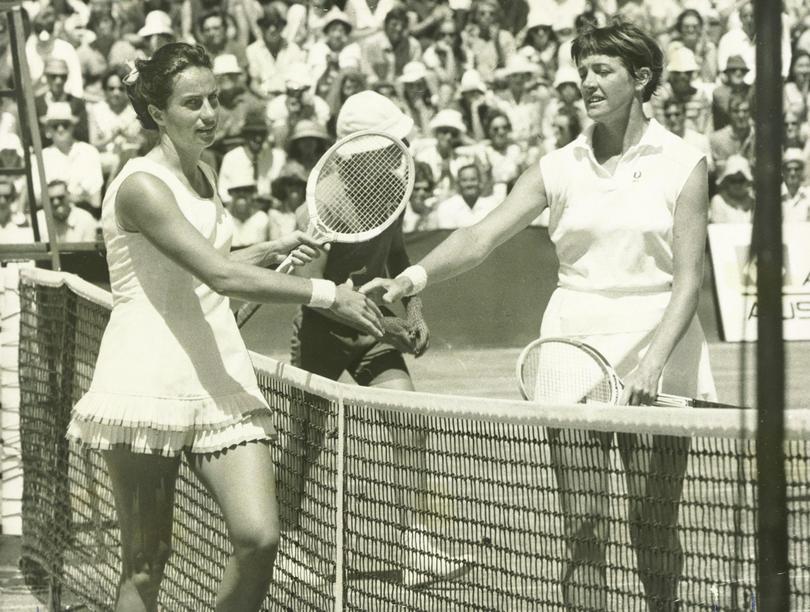Few players took a post-Wimbledon break. As soon as the Championships were over, the world’s elites dispersed to points all over Europe: Båstad in Sweden, Dublin in Ireland, Gstaad in Switzerland, and Newport in Wales. Four top-level men’s tournaments jammed the slate this week; all were joint events. There was a women’s competition in Düsseldorf, too.
The strongest group of men–Stan Smith, Björn Borg, and Manuel Orantes–headed for the resort on the Swedish coast. Two superstar women–Margaret Court and Virginia Wade–opted for the Irish Championships, a once-prestigious tour stop that had settled into second-tier status.
The relative calm of Dublin was exactly what Court and Wade needed. The British standout faced immense pressure during the Wimbledon fortnight, and she had never handled it particularly well. Even in Ireland, she “alternated brilliance with mediocrity in bewildering proportions,” according to one man on the scene. But after fighting through an up-and-down quarter-final against Wendy Turnbull, she recovered on July 13th, winning the first seven games of her semi-final with another Australian, Pat Coleman. She advanced to the title match, 6-0, 6-4.
Court was far steadier. At the business end of majors–or in exhibitions against aging hustlers–Margaret seemed to invite speculation about her nerves. When the world wasn’t watching, though, she might have been the greatest of all time. In Dublin, she cast aside Wimbledon junior champ Ann Kiyomura, 6-3, 6-2, then double-bageled Irish hope Geraldine Barniville. In the semis, she allowed her countrywoman Helen Gourlay just three games.
The Irish Championships were a refuge for a pair of men, as well. The British Lawn Tennis Association, the national federation most embarrassed by the ATP’s Wimbledon boycott, felt they had to respond to the union’s power grab. The symbolic gesture they settled on was a temporary ban: British players who participated wouldn’t be allowed to compete on home soil. Mark Cox, a leading voice within the players’ union and the second-best Brit behind Roger Taylor, was the prime target.
Instead of the traditional trek to the Welsh Championships in Newport, then, Cox and fellow ATPer Graham Stilwell crossed the Irish Sea. Both men reached the semis, where little-known South African John Yuill knocked out Stilwell. Cox was challenged by another Springbok, dropping a tight first set to Bernard Mitton before running away with the last two sets, 5-7, 6-1, 6-0.
These were just a few of the storylines filling out the post-Wimbledon landscape.
Spare a thought for the tennis enthusiast, fifty years ago today, trying to keep up with the action. Roy Emerson and Ilie Năstase advanced in Gstaad, while Borg, Smith, and Marjorie Gengler recorded wins in Båstad. Evonne Goolagong moved toward a title in Düsseldorf. At Newport, Julie Heldman picked up a trophy with a wild 1-6, 6-1, 11-9 decision over the young Dianne Fromholtz, who had beaten her four weeks earlier in Beckenham and threatened Wade at Wimbledon. In men’s action at the Welsh, Taylor overcame both tennis elbow and uneven umpiring to advance to the final over countryman John Paish.
No one could blame an aficionado who opted to sit back and wait for next month’s issue of World Tennis. In the meantime, experts and casual fans alike could mull a bet on the upcoming spectacle between Billie Jean King and Bobby Riggs. In Las Vegas, Jimmy the Greek had Riggs as an 8-5 favorite.
* * *
This post is part of my series about the 1973 season, Battles, Boycotts, and Breakouts. Keep up with the project by checking the TennisAbstract.com front page, which shows an up-to-date Table of Contents after I post each installment.
You can also subscribe to the blog to receive each new post by email:
